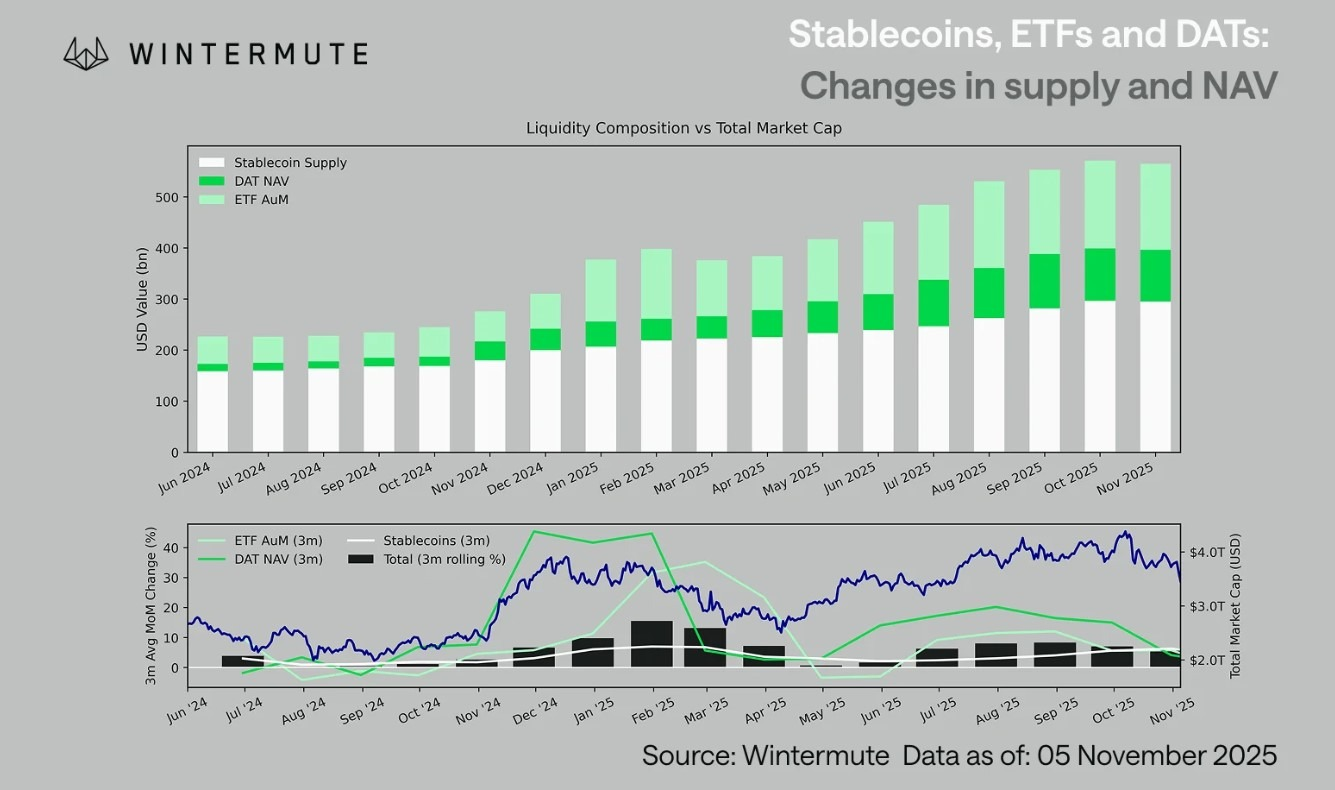International market maker Wintermute warns that the crypto market currently mainly runs on recycled liquidity, or money that continues to circulate within the ecosystem without new inflows. That could, in theory, be a mega problem for the Bitcoin bull market.
Free financial newsletter!
Want to stay informed about the most important developments in the financial world? Then subscribe for free The Money Press.
Join over 6,000 others who every Monday receive a full market update in their inbox. And best of all? It’s completely free.
You can register here!
Three sources of capital are drying up
In an analysis published on Wednesday, Wintermute said liquidity has been the main driving force behind any crypto cycle for years. Although the adoption of blockchain technology continues to grow, the inflow of fresh capital has clearly weakened in recent months.
Wintermute distinguishes three main channels through which money traditionally flows into the crypto market:
- Stablecoins (such as USDT and USDC)
- Exchange-traded funds (ETF’s)
- Digital Asset Treasuries (DATs), companies that hold crypto on their balance sheets

According to data from Wintermute, these three categories grew strongly between 2024 and early 2025: combined assets in ETFs and DATs rose from $40 billion to $270 billion, while stablecoin issuance doubled to around $290 billion.
But since then, growth has stalled. New stablecoins are hardly being issued anymore, ETF inflows have leveled off and the number of companies adding crypto to their balance sheets is only increasing to a limited extent.
High interest rates keep investors on the sidelines
According to Wintermute, the cause is not a tight monetary policy. The global money supply is still ample, and central banks have just started cutting interest rates after two years of tightening.
The problem, according to the company, is where that liquidity flows. The high short-term interest rates and the Secured Overnight Financing Rate (SOFR) currently make US government bonds a much more attractive alternative than Bitcoin.
Investors therefore opt for safe returns in government bonds, instead of the risk of digital assets. As a result, although trading volumes in crypto remain reasonably high, the total capital in the market is no longer growing.
The result is what Wintermute calls a “player-versus-player market”: an environment in which traders fight each other instead of new money driving structural growth.
“Liquidity has not disappeared,” Wintermute said. “It is only recycled within the system rather than expanded.”
No new fuel for Bitcoin
For Bitcoin, this situation means that the recent price drops are probably not caused by fundamental mistrust, but by a lack of new capital. Once prices rise, traders quickly take profits, with too little new money to sustain those increases.
The market therefore reacts hypersensitively to small shifts in supply and demand, leading to short, sharp rallies followed by rapid corrections.
According to Rachael Lucas, analyst at the Australian crypto exchange BTC Markets, there are indeed companies that buy additional Bitcoin, but they do so through over-the-counter transactions (OTC), outside the open market.
“It’s a silent form of accumulation,” says Lucas. “These buyers avoid price impact and volatility by trading directly with suppliers.” As a result, the number of companies that own Bitcoin increases, but this does not directly translate into a higher Bitcoin price.
Free financial newsletter!
Want to stay informed about the most important developments in the financial world? Then subscribe for free The Money Press.
Join over 6,000 others who every Monday receive a full market update in their inbox. And best of all? It’s completely free.
You can register here!
Source: https://newsbit.nl/grote-partij-ziet-mega-probleem-voor-bitcoin/

